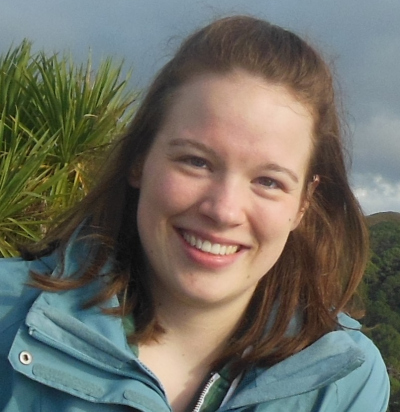- Graduate School GLOMAR
- PhD student members
- Lili Hufnagel
Lili Hufnagel
| Institution: | University of Bremen |
| Office: | MARUM Pavillon, Raum 0040 |
| Phone: | +49 421 218 - 65788 |
| E-mail: | [Bitte aktivieren Sie Javascript] |
| Other webpage(s): | Lili's MARUM web page |

PhD Project
Formation, transportation and transformation processes of organic matter from the surface ocean to the deep sea
The Biological Carbon Pump plays a critical role in the global carbon cycle as key regulator of atmospheric CO2. Organic matter is produced by the fixation of atmospheric CO2 by marine phytoplankton, which are photosynthetic primary producers. The organic matter forms aggregates which are exported from the surface ocean to the seafloor where carbon is stored long-term in the sediments. However, only 10-30% of the total produced organic carbon in the euphotic layer sinks below 100 m, and just 1% is sequestered in the deep ocean. During sinking processes like remineralization by bacteria, degradation, fragmentation, mineral scavenging, feeding, fecal pellet production and thus repacking of the particulate organic matter (POC) by zooplankton take place and alter the characteristics and the quantity of the sinking material, e.g. sinking velocities. Little is known about the transport and transformation processes of organic matter within the water column and at the seafloor. This is to a large extent due to limited understanding of the origin, the vertical transport, and age of settling phytoplankton aggregates through the water column. Therefore, to understand and possibly predict the carbon uptake and storage capacity of the oceans, it is important to study the factors influencing the composition, sinking speed and degradation of aggregates within the biological pump.
The aim of my PhD project is to investigate the formation, transportation, and transformation processes of organic matter from the surface ocean to the deep sea. The main focus of the project is to investigate the controlling mechanisms of the biological carbon pump and how those mechanisms may alter in a future ocean. In my PhD, I focus on linking the surface phytoplankton to the aggregate composition at depth and linking the surface microbial community composition to particle-associated microbes. During several research cruises, we deploy free-drifting sediment traps, Marine Snow Catcher and optical systems to determine the particle flux and analyze prokaryotic and eukaryotic communities.
Thesis Committee
| Prof. Dr. Morten Iversen | University of Bremen, MARUM - Center for Marine Enviornmental Sciences and Alfred Wegener Institute - Helmholtz Center for Polar and Marine Research, Bremerhaven |
| Prof. Dr.Rudolf Amann | MPI-MM Bremen and University of Bremen |
| Dr. Katja Metfies | Alfred Wegener Institute - Helmholtz Center for Polar and Marine Research, Bremerhaven |
| Dr. Wilken-Jon von Appen | Alfred Wegener Institute - Helmholtz Center for Polar and Marine Research, Bremerhaven |
| Dr. Simon Ramondenc | Alfred Wegener Institute - Helmholtz Center for Polar and Marine Research, Bremerhaven |


